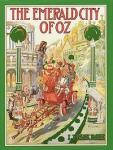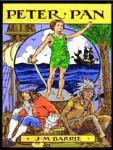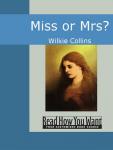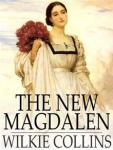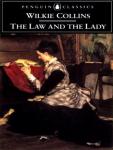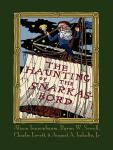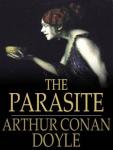Jack And Jill
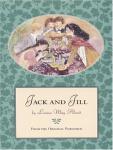
When best friends, Jack and Jill, tumble off their sled, their injuries cause them to be bedridden for many months. Their parents fill their days with the joys of Christmas preparations, a theatrical production and many other imaginative events.
Related Books
Author other works
-
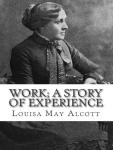
Work: A Stort Of Experience
Louisa May Alcott
Work: A Story of Experience, first published in 1873, is a semi-autobiographical novel by Louisa May Alcott, the author of Little Women, set in the times before and after the American Civil War.It is one of "several nineteenth-century novels [which] uncovers the changes in women's work in the new industrial era, as well as the dilemmas, tensions, and the meaning of that work".[1] The story depicts the struggles of a young woman trying to support herself. The main character, Christie Devon, works outside the home in a variety of different jobs, but the end of her story marks "the beginning of a new career as a voice and activist for other working women".The character David Sterling is loosely based on Alcott's friend, Henry David Thoreau.
-

Little Women
Louisa May Alcott
Little Women is a novel by American author Louisa May Alcott (1832–1888). The book was written and set in the Alcott family home, Orchard House, in Concord, Massachusetts. It was published in two volumes in 1868 and 1869. The novel follows the lives of four sisters – Meg, Jo, Beth, and Amy March – and is loosely based on the author's childhood experiences with her three sisters. The first volume, Little Women, was an immediate commercial and critical success, prompting the composition of the book's second volume, entitled Good Wives, which was also successful. Both books were first published as a single volume entitled Little Women in 1880. Alcott followed Little Women with two sequels, also featuring the March sisters: Little Men (1871) and Jo's Boys (1886). Little Women was a fiction novel for girls that veered from the normal writings for children, especially girls, at the time. Little Women has three major themes:" domesticity, work, and true love. All of them are interdependent and each is necessary to the achievement of a heroine’s individual identity."Little Women itself "has been read as a romance or as a quest, or both. It has been read as a family drama that validates virtue over wealth." Little Women has been read "as a means of escaping that life by women who knew its gender constraints only too well." Alcott "combines many conventions of the sentimental novel with crucial ingredients of Romantic children's fiction, creating a new form of which Little Women is a unique model." Elbert argued that within Little Women can be found the first vision of the "American Girl" and that her multiple aspects are embodied in the differing March sisters.
-
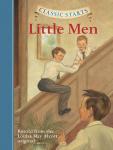
Little Men
Louisa May Alcott
Little Men, or Life at Plumfield with Jo's Boys is a novel by American author Louisa May Alcott, first published in 1871. The novel reprises characters from Little Women and is considered by some the second book of an unofficial Little Women trilogy, which is completed with Alcott's 1886 novel Jo's Boys, and How They Turned Out: A Sequel to "Little Men". Little Men tells the story of Jo Bhaer and the children at Plumfield Estate School. The book was inspired by the death of Alcott's brother-in-law, which reveals itself in one of the last chapters, when a beloved character from Little Women passes away. The novel has been adapted to a 1934 film, a 1940 film, a television series, and a Japanese animated television series.Little Men recounts six months in the life of the students at Plumfield, a school run by Professor Friedrich and Mrs. Josephine Bhaer. The idea of the school is first suggested at the very end of part two of "Little Women", when Jo inherited the estate from her Aunt March.The story begins with the arrival of Nat Blake, a shy young orphan who used to earn a living playing the violin. We are introduced to the majority of the characters through his eyes. There are ten boys at the school already; Nat, and later his friend Dan, join them, and soon after Nan arrives as companion for Daisy, the only girl. Jo's sons Rob and Teddy are younger than the others and are not counted among the pupils, nor are the two girls, Daisy and Nan.The school is not run on conventional lines. All the children have their own gardens and their own pets, and are encouraged to experiment with running businesses. Pillow fights are permitted on Saturdays, subject to a time limit. Children are treated as individuals, with a strong emphasis on gently moulding their characters.Daisy Brooke (Meg's daughter), is at the school with her twin brother Demi, but is somewhat isolated with no other girls her age, until Nan's arrival. Nan is even more of a tomboy than Jo was as a child, while Daisy is interested mainly in dolls and in her own mini kitchen, which purchased by Jo's brother-in-law, Laurie.The other new student, Dan, is introduced by Nat. Dan originally decides the other boys are "molly-coddles" and leads them in experiments with fighting, drinking, smoking, swearing and playing cards, which results in his being temporarily removed from the school. He returns eventually with an injured foot, and redeems himself by standing up for Nat when Nat is falsely accused of theft by the other boys. He also becomes curator of the school's natural history museum.Personal relationships are central to the school, and diversity is celebrated. Daisy is deeply attached to her twin brother, to shy Nat, and to tomboy Nan. Nan and Tommy are also close and intend to marry when they grow up. Dan, already friends with Nat, is unexpectedly drawn to the pious Demi and the toddler Teddy. While Franz, Emil, Daisy and Demi are all related to the Bhaers, they are not treated with favouritism and are encouraged to overcome their faults just the same as the other pupils.
-
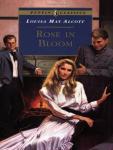
Rose In Bloom
Louisa May Alcott
Written by Louisa May Alcott, Rose in Bloom depicts the story of a nineteenth century girl, Rose Campbell, finding her way in society. Sequel to Eight Cousins.The story begins when Rose returns home from a long trip to Europe. Everyone has changed. As a joke, Rose lines up her seven cousins to take a long look at them, just as they did with her when they first met. The youngest accidentally mentions that the aunts want Rose to marry one of her cousins to keep her fortune in the family. Rose is very indignant, for she has decided ideas about what her future holds. From the beginning, she declares that she can manage her property well on her own and that she will focus on philanthropic work. Charlie has already decided she is marked out for him, with the approval of his mother.Phebe also comes home no longer the servant that Rose "adopted" but as a young lady with a cultured singing ability. Rose challenges anyone who would look down on "her Phebe", and she is readily accepted as part of the Campbell clan until Archie falls in love with her: the family feel that Archie would be marrying beneath himself. Phebe's pride and debt to the family make her wish to prove herself before she will accept Archie; so she leaves the Campbells' home and sets off to make a name for herself as a singer, to try to earn the respect of her adopted family.After some time at home, Rose has her "coming out" into society, much to her Uncle Alec's chagrin. She promises to try high society for only three months. During that time, her cousin Charlie falls in love with her and tries in various ways to woo her. Rose begins to give in to his charm, but he derails the budding romance by coming to her house, late one night, very drunk. This ruins all her respect for him and she sees how unprincipled he really is. After the three months are up, Rose begins to focus on her philanthropic projects and convinces Charlie to try to refrain from alcohol and other frivolous things, in order to win her love and respect.She tries to help Charlie overcome his bad habits with the help of her uncle, but fails. Charlie does all he can to win her heart, but in the end he succumbs, hindered by his own weak will and his constant need for acceptance by his friends. Being spoilt by his mother meant he never learned to say "no", even to himself, and his lack of discipline proves fatal: Charlie's life ends tragically in an alcohol-induced accident on the eve of his voyage to see his father and restore his good character. Although Rose never was in love with Charlie, she did have hope that he would return a better man and that they might see what relationship could develop.Several months after Charlie's death, Rose finds out that another cousin, Mac, is now in love with her. At first, never thought of him as anything but "the worm", she refuses his love; but she does declare the deepest respect for him. This gives Mac hope, and he goes to medical school, willing to work and wait for her. She finds his devotion touching, and she begins to see him clearly for the first time, realizing that Mac is the "hero" she has been looking for. He is exactly suited to her tastes and has become a man in the noblest sense of the word. He also settles a joke with her by publishing a small book of poetry to wide critical success, earning her respect even more deeply. It is his absence that shows her how much she cares for him.While Rose is discovering her heart, Steve and a minor character, Kitty, engage to marry. This creates a new sensation in the family, and Kitty begins to look to Rose for sisterly guidance. Rose encourages her to improve her silly mind, and Kitty is a very willing pupil. Rose continues to wait for Mac's return but reaches a crisis when Uncle Alec becomes very sick while visiting Mac; Phebe nurses him back from the brink of death, at personal peril, and returns him to the anxious Campbells to be greeted as a triumphant member of the family, sealing her own engagement with Archie with everyone's blessing. This homecoming is completed for Rose when she is reunited with Mac and finally declares her own sentiments. The book closes with three very happy couples, and much hope for their felicity.
-
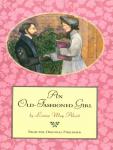
An Old-Fashioned Girl
Louisa May Alcott
An Old-Fashioned Girl is a novel by Louisa May Alcott.It was first serialised in the Merry's Museum magazine between July and August in 1869 and consisted of only six chapters. For the finished product, however, Alcott continued the story from the chapter "Six Years Afterwards" and so it ended up with nineteen chapters in all. The book revolves around Polly Milton, the old-fashioned girl who titles the story. Polly visits her wealthy friend Fanny Shaw in the city and is overwhelmed by the fashionable and urban life they live––but also left out because of her "countrified" manners and outdated clothes.The novel was the basis of a 1949 musical film starring Gloria Jean as Polly.Polly Milton, a 14-year-old country girl, visits her friend Fanny Shaw and her wealthy family in the city for the first time. Poor Polly is overwhelmed by the splendor at the Shaws' and their urbanized, fashionable lifestyles, expensive clothes and other habits she has never been exposed to, and, for the most part, dislikes. Fanny's friends reject her because of her different behavior and simple clothing, and Fan herself can't help considering her unusual sometimes. However, Polly's warmth, support and kindness eventually win the hearts of all the family members, and her old-fashioned ways teach them a lesson.Six years later, Polly comes back to the city to become a music teacher and struggles with profession issues and internal emotions. Later in the book, Polly finds out that the prosperous Shaws are on the brink of bankruptcy, and she guides them to the realization that a wholesome family life is the only thing they will ever need, not money or decoration.With the comfort of the ever helpful Polly, the family gets to change for the better and to find a happier life for all of them. After being rejected by his fiancée, Trix, Tom procures a job out West, with Polly's brother Ned, and heads off to help his family and compensate for all the money he has wasted in frivolous expenditures. At that point of the book, we see that Polly and Tom seem to have developed strong feelings for one another.At the end of the book, Tom returns from the West and finally gets engaged to his true love, Polly.
